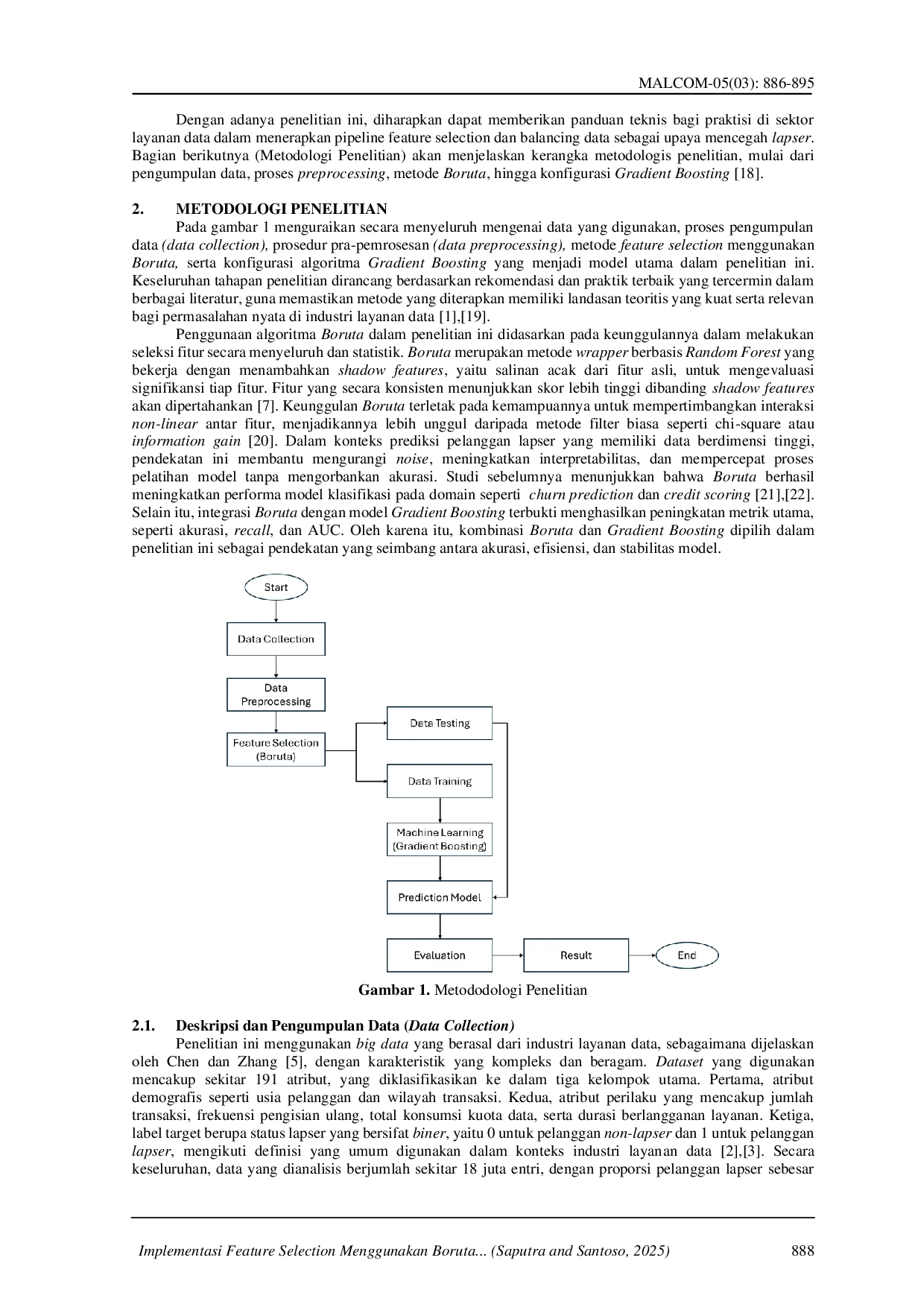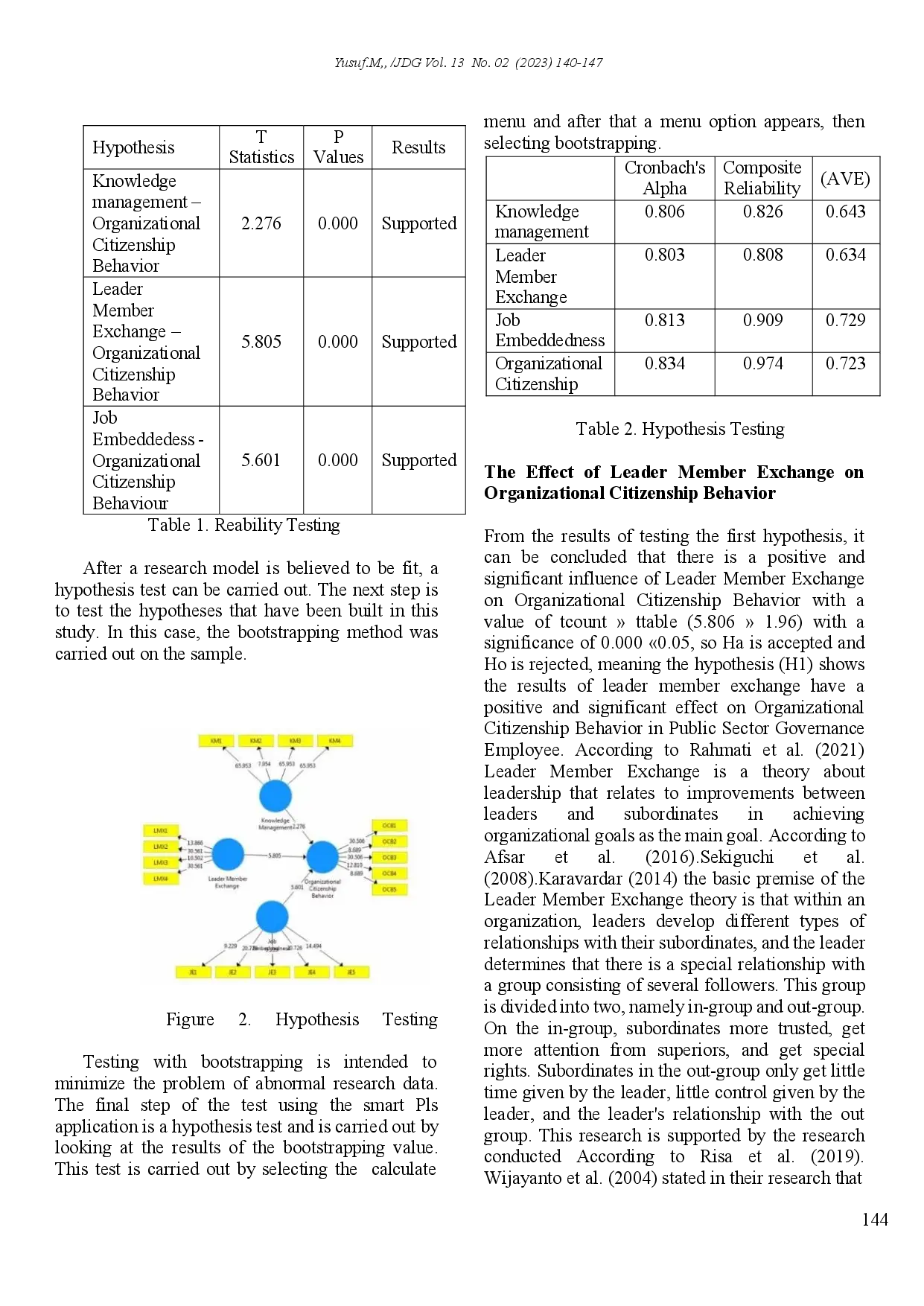IRPIIRPI
MALCOM: Indonesian Journal of Machine Learning and Computer ScienceMALCOM: Indonesian Journal of Machine Learning and Computer ScienceThe retail industry faces significant challenges in understanding increasingly complex customer behavior due to massive data growth. One major obstacle is suboptimal customer segmentation, leading to ineffective marketing strategies. This study aims to optimize customer segmentation by implementing the K-Medoid algorithm, which excels in handling outliers and producing more stable clusters compared to K-Means. The dataset consists of over 10,000 customer transactions from a major retail company in Indonesia. The research process includes data collection and preprocessing, K-Medoid algorithm implementation, and performance evaluation using the silhouette score. The results indicate that the K-Medoid algorithm achieves more accurate customer segmentation, with a silhouette score of 0.39. The generated clusters exhibit greater homogeneity, enabling companies to design more targeted marketing strategies, such as specific discount offers and tailored loyalty programs. Based on these findings, the K-Medoid algorithm is recommended to enhance customer management effectiveness in the retail industry. This study contributes to selecting a more suitable algorithm for customer segmentation in the era of big data and opens opportunities for further exploration of hybrid algorithms and additional evaluation metrics.
This study successfully applied the K-Medoid algorithm to segment customers in the retail industry, revealing distinct groups based on transaction behavior.The results demonstrate the algorithms ability to generate more accurate and stable customer segments compared to other methods.These findings provide valuable insights for retailers to develop targeted marketing strategies and improve customer management effectiveness.
Further research should investigate the integration of the K-Medoid algorithm with other machine learning techniques, such as deep learning, to enhance the accuracy and predictive power of customer segmentation. Additionally, exploring the use of alternative evaluation metrics beyond the Silhouette Score, such as the Calinski-Harabasz Index or Davies-Bouldin Index, could provide a more comprehensive assessment of clustering performance. Finally, future studies could focus on incorporating demographic and psychographic data alongside transactional data to create more nuanced and actionable customer segments, allowing for highly personalized marketing campaigns and improved customer relationship management. These investigations will contribute to a deeper understanding of customer behavior and enable retailers to optimize their strategies for increased profitability and customer satisfaction.
- Penerapan Algoritma K-Medoids dan FP-Growth dengan Model RFM untuk Kombinasi Produk | Building of Informatics,... ejurnal.seminar-id.com/index.php/bits/article/view/5268Penerapan Algoritma K Medoids dan FP Growth dengan Model RFM untuk Kombinasi Produk Building of Informatics ejurnal seminar id index php bits article view 5268
- Comparison of Support Vector Machine and XGBSVM in Analyzing Public Opinion on Covid-19 Vaccination |... jurnal.fikom.umi.ac.id/index.php/ILKOM/article/view/1090Comparison of Support Vector Machine and XGBSVM in Analyzing Public Opinion on Covid 19 Vaccination jurnal fikom umi ac index php ILKOM article view 1090
- Penerapan Algoritma K-Medoids Untuk Menentukan Segmentasi Pelanggan | Sulistyawati | Sistemasi: Jurnal... doi.org/10.32520/stmsi.v10i3.1332Penerapan Algoritma K Medoids Untuk Menentukan Segmentasi Pelanggan Sulistyawati Sistemasi Jurnal doi 10 32520 stmsi v10i3 1332
| File size | 386.17 KB |
| Pages | 10 |
| DMCA | ReportReport |
Related /
IRPIIRPI Sistem dirancang menggunakan framework Chainlit sebagai antarmuka web, didukung oleh Groq untuk mempercepat proses inferensi, serta integrasi LangChainSistem dirancang menggunakan framework Chainlit sebagai antarmuka web, didukung oleh Groq untuk mempercepat proses inferensi, serta integrasi LangChain
IRPIIRPI Berdasarkan hasil ini, direkomendasikan pola makan sehat, aktivitas fisik teratur, manajemen stres, serta pemeriksaan kesehatan rutin. Penelitian ini membandingkanBerdasarkan hasil ini, direkomendasikan pola makan sehat, aktivitas fisik teratur, manajemen stres, serta pemeriksaan kesehatan rutin. Penelitian ini membandingkan
EJOURNALUNIGOROEJOURNALUNIGORO Irigasi pompa Desa Prigi direncanakan untuk mengairi areal potensial seluas 360 hektar dengan 300 hektar diantaranya adalah luasan fungsional. Teknis pengambilanIrigasi pompa Desa Prigi direncanakan untuk mengairi areal potensial seluas 360 hektar dengan 300 hektar diantaranya adalah luasan fungsional. Teknis pengambilan
EJOURNALUNIGOROEJOURNALUNIGORO Dengan volume drainase sebesar 294,40 m³, debit hujan 1,2032×10⁻¹ m³/detik dapat ditampung dengan baik. Analisis menunjukkan beban hujan padaDengan volume drainase sebesar 294,40 m³, debit hujan 1,2032×10⁻¹ m³/detik dapat ditampung dengan baik. Analisis menunjukkan beban hujan pada
Useful /
EJOURNALUNIGOROEJOURNALUNIGORO Pembangunan Jalan Rigid Pavement adalah proyek infrastruktur yang kompleks dan memiliki potensi risiko yang signifikan. Penelitian ini bertujuan untukPembangunan Jalan Rigid Pavement adalah proyek infrastruktur yang kompleks dan memiliki potensi risiko yang signifikan. Penelitian ini bertujuan untuk
IRPIIRPI Memprediksi pelanggan lapser menjadi tantangan utama di sektor layanan data yang kompetitif, disertai tingginya biaya akuisisi pelanggan baru. PenelitianMemprediksi pelanggan lapser menjadi tantangan utama di sektor layanan data yang kompetitif, disertai tingginya biaya akuisisi pelanggan baru. Penelitian
UPN VeteranUPN Veteran Dengan program UPSUS, petani lokal dapat meningkatkan produktivitas pertanian dan memenuhi kebutuhan beras nasional. Penelitian ini menggunakan metodeDengan program UPSUS, petani lokal dapat meningkatkan produktivitas pertanian dan memenuhi kebutuhan beras nasional. Penelitian ini menggunakan metode
UNYUNY Rancangan penelitian berupa eksperimen semu dengan times series. Pengukuran dilakukan sebanyak empat kali secara periodik. Populasi penelitian ini adalahRancangan penelitian berupa eksperimen semu dengan times series. Pengukuran dilakukan sebanyak empat kali secara periodik. Populasi penelitian ini adalah







